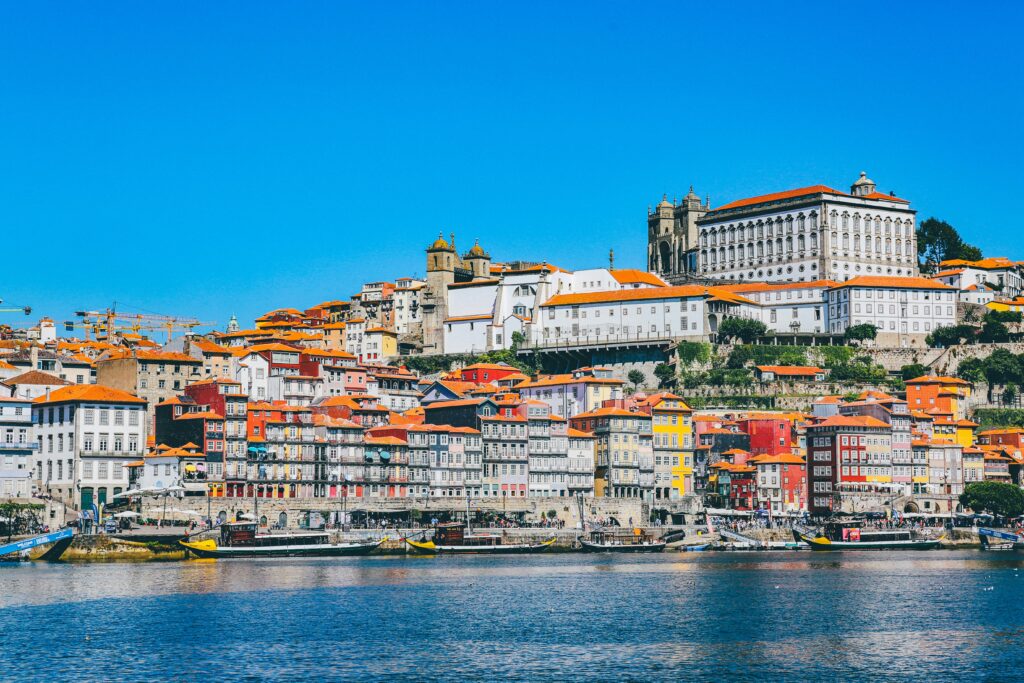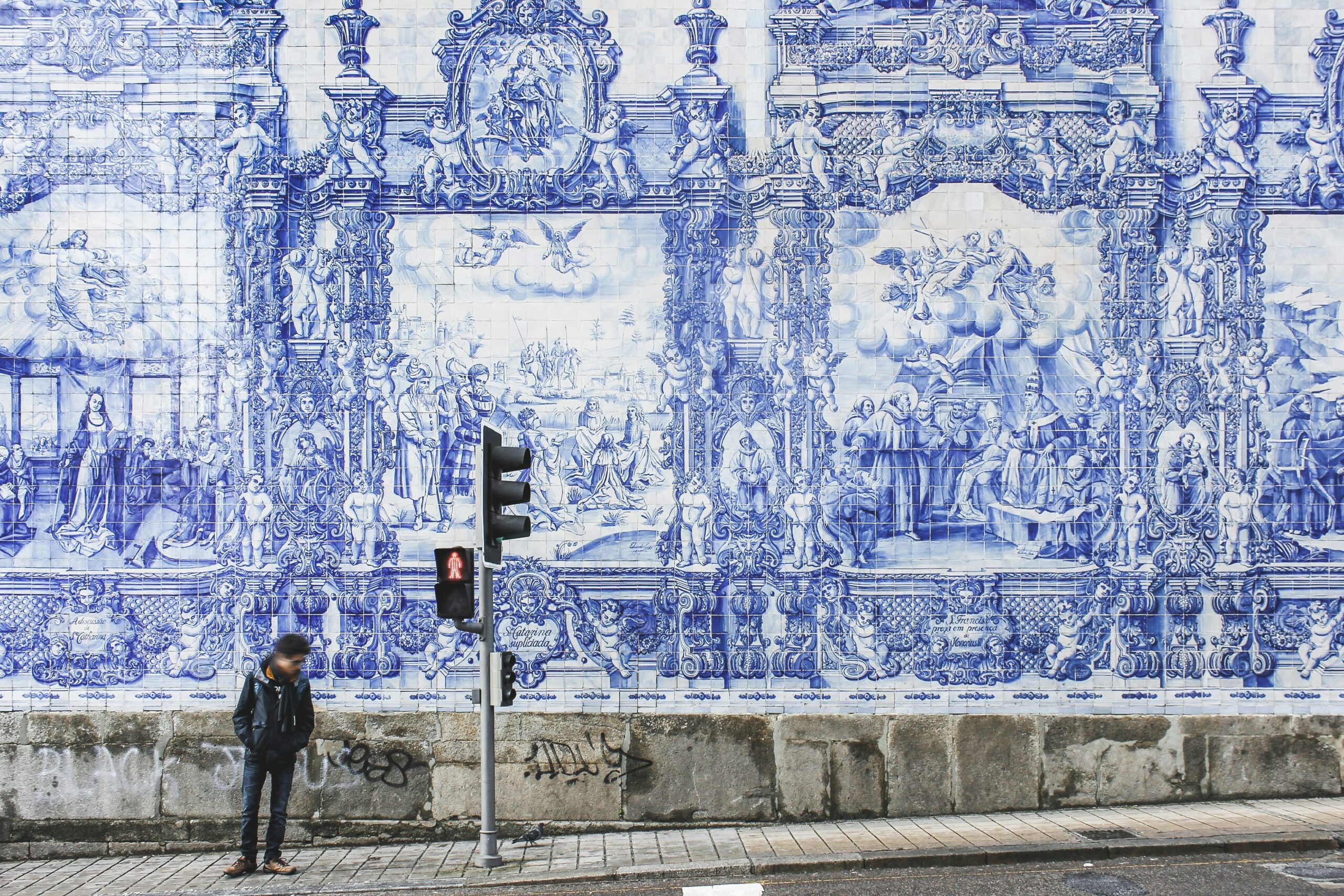Porto, Portugal’s second-largest city, is an enchanting destination, that blends rich history, vibrant culture, stunning architecture, and delicious cuisine. Located along the Douro river estuary in northern Portugal, Porto is famed for its stately bridges, port wine production, and a historic center designated as a UNESCO World Heritage Site. Whether you are history buff as me, a foodie, a wine enthusiast, or an adventure seeker, Porto offers something for everyone. Moreover staying fit while exploring this dynamic city is entirely possible with its abundant outdoor activities and wellness options.

The Allure of Porto
Porto boasts a fascinating history that dates back to Roman times. During the Roman era, the city began to take shape. The Romans established a settlement called “Portus Cale” on the banks of the Douro river, which eventually evolved into Porto. Evidence of this ancient past can still be seen in the city’s layout and archeological remains.
The middle ages were a period of significant growth and development for Porto. The city’s strategic location made it a crucial port and trading hub. During this time, several key structures were built, many of which still stand today.
- Sao Francisco church – Known for its Gothic architecture and opulent Baroque interior, this church is a testament to Porto’s medieval and post-medieval religious significance. The church’s interior is lavishly decorated with gilded wood carvings, making it one of the most beautiful ecclesiastical buildings in Portugal. This church is a must-visit.
- Porto Cathedral(Se do Porto) – This Romanesque-Gothic cathedral located in the historical center, is one of the city’s oldest monuments. Its construction began in the 12th century, and it offers stunning views of Porto and the Douro River from its terrace. The cathedral’s fortified appearance reflects its dual role as a place of worship and a defensive stronghold.
The Age of Discovery was a transformative period for Porto and Portugal as a whole. The city played a significant role in maritime exploration and trade. It was during this era that Porto’s merchants began exploring their famous port wine, establishing the city as a vital economic center.
- Casa do Infante – This historical house, named after Prince Henry the Navigator, is believed to be his birthplace. The building now houses a museum dedicated to Porto’s history and it’s role in the Age of Discovery.
Baroque Splendor, the 17th and the 18th centuries saw a flourish of a Baroque architecture in Porto, adding a layer of grandeur and lushness to the city’s historical landscape.
- Clerigos Tower – Designed by the Italian architect Nicolau Nasoni, this iconic Baroque bell tower is one of Porto’s most recognizable landmarks. Climbing those 240 stairs will take the breath out of you, but the panoramic view of the city is definitely the reward.
- Palacio da Bolsa – The Neoclassical Stock Exchange Palace, built in the 19th century, showcase Porto’s architectural elegance. The Arabian Hall, inspired by the Alhambra in Spain, it is a highlight of the interior.
During the Industrial and Modern Era, precisely the 19th and 20th centuries, brought to Porto further shaping to the urban and cultural landscape.
- Dom Luis I Bridge was completed in 1886. This iron bridge spans the Douro River and connects Porto with Vila Nova de Gaia. Designed by a disciple of Gustave Eiffel, the bridge is a symbol of Porto’s industrial age and engineering mastery.
- Sao Bento Railway Station was opened in 1916. The station is known for its stunning azulejo (blue and white) panels that depict significant events in Portuguese history. The tiles created by artist Jorge Colaco, are a masterpiece of decorative art.

Porto’s commitment to preserving its historical heritage is evident in the careful restoration and maintenance of the ancient buildings and neighborhoods. The city’s historical center, a UNESCO World Heritage Site since 1996, reflects Porto’s dedications to safeguarding its cultural legacy for future generations.
How to stay fit while exploring Porto
- Walking tours and hiking. Porto’s hilly terrain and scenic landscape make it and ideal place for walking and hiking. For the walking tours, you can opt for guided tour to explore the city’s historical sites, street art and hidden gems. Furthermore you can take a walk along the riverside promenade from the Ribiera district to Foz do Douro, where the river meets the Atlantic ocean. This route is roughly 6 km and offers stunning views. There is also Parque de Cidade, the largest urban park in Portugal, perfect for jogging, walking, or simply enjoying nature.
- Cycling is another excellent way to stay active while sightseeing in Porto. You can rent a bike, and explore the cycling paths along the Douro River and the Atlantic coast, or you can go for guided bike tours to explore the town.
- Water Sports, with the Duoro river and the Atlantic ocean at its doorstep, Porto offers numerous water sports activities: kayaking, surfing at Matosinhos Beach, which is popular spot for surfing, with several surf schools offering lessons for all levels. Stand-Up Paddle boarding (SUP) on the river or the sea.
- Yoga and fitness classes. There are many studios, such as Yoga Sobre o Porto or Casa do Yogo.
- Fitness centers or outdoor fitness.
Staying fit while enjoying all that Porto has to offer is entirely feasible with its variety of outdoor or indoor activities. So pack your bags, lace up your sneakers, and get ready to explore the enchanting city of Porto, all while keeping fit and enjoying every moment of your journey.
